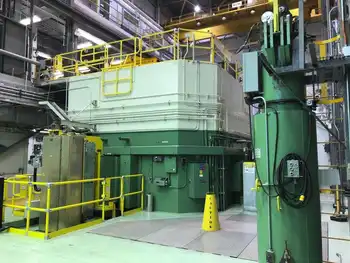Light-water and heavy-water reactors can coexist
By Armand Laferrere, Financial Post
Protective Relay Training - Basic
Our customized live online or in‑person group training can be delivered to your staff at your location.

- Live Online
- 12 hours Instructor-led
- Group Training Available
Around the world, nuclear is seen more and more as a necessary and growing part of a balanced, low-emission energy mix. This has created a considerable upsurge in world demand. The World Nuclear Association reports that 22 nuclear plants are currently under construction, five in Europe and the rest in Asia. A decade from now, however, there will likely be around 100 plants in construction, including at least 30 in the United States and an estimated six to eight in Canada.
To meet that global demand, industry players will need to innovate and team up to stay in the game. We will need to mobilize an immense amount of new talent: My firm, Areva, alone will have recruited no fewer than 10,000 new employees worldwide by the end of this year. We will also need to train and qualify new subcontractors in new markets, keeping an eye on such rare assets as talented engineers or available slots for large forgings.
All this, however, will not be enough. When demand is that high, standardization of technologies becomes inevitable to improve delivery times all along the supply chain. And with the trend toward technology standardization comes the harmonization of safety requirements. The market would never be comfortable if it felt that one jurisdiction applied looser safety standards than others. Furthermore, safety authorities will be under increasing pressure to reach their decisions more quickly; therefore, they will look favourably on technologies that have already been designed with highly robust and redundant safety features and approved by established safety authorities in other markets.
In that growing and changing world, heavy-water technology - which between Atomic Energy Canada Ltd.'s CANDU and the Indian and Pakistani products currently accounts for about 10% of the world's operating reactors -faces the prospect of a reduced market share: 85% of the world's 444 existing reactors are light water. The United States, Japan and Russia have no HWRs, either built or under construction. All future builds in China are likely to be LWRs. In Europe, only Romania - which already has a CANDU reactor - is planning to build another.
Areva is now building its 99th and 100th reactors - Generation III+ Evolutionary Pressurized Reactors - in Olkiluoto, Finland and Flamanville, France, respectively. They are the most advanced nuclear design available today. Our design has been selected by Chinese and U.S. utilities, thus demonstrating the benefits of our policy of working wherever possible in partnership with trusted local players.
I respectfully suggest that the Ontario government needs to consider its choice in the context of this growing global energy market, because that is the field on which the Ontario nuclear industry will be playing. There is, in fact, a strong upside to the current trend toward standardization: significantly increased opportunities for subcontractors to export their skills around the world.
Since a global supply chain is the only way to meet global demand, tomorrow's nuclear plants will be multinational at their very core, with different parts coming from abroad to be assembled locally. Indeed, this has already begun. A Canadian subcontractor, L3-Mapps, is designing and building the simulator for the first Areva Generation III++ nuclear plant in Finland. In New Brunswick, AREVA is installing a state-of-the-art security system at the Point Lepreau reactor (and seeking local partners to assist), thus building skills that can be applied in future projects.
I hope that these will only be the first examples of co-operation on a much larger scale. Canada's nuclear industry is at a critical time. It has a proud history and incredible talent, but has to face tough questions about its future. I hope that the Canadian nuclear industry will achieve what the automotive industry did at the time of the Auto Pact: that it will choose to become an indispensable part of a global, state-of-the-art industry.
The Ontario government is undoubtedly considering the long-term viability of Ontario's nuclear industry as a key decision variable. Areva research has shown that approximately 70% of the content of an Areva reactor built here would be local content. Local sourcing is, indeed, a necessary and general practice in the nuclear industry, and this figure was recently supported when, in a submission to the U.K. government this year, AECL pledged British content of 70% if a CANDU reactor is built there.
When it comes to LWR and HWR technology, Ontario is not facing an either/or scenario. With its entire current fleet of reactors being CANDUs, there is no question that HWR technology will continue to play an essential role in the province's nuclear industry. The real question is whether the two technologies can co-exist here, and to what extent the province will be an exporter of nuclear components and expertise.
It is inconceivable that Ontario, or Canada, could be relegated to the sidelines in the coming era of zero-emissions energy. We have some of the best skills in the world resident here. Ontario has everything to lose by closing down on itself at a time of overwhelming change in the world nuclear market. It has everything to gain by partnering with larger players in order to secure new markets for its products and diversify its skills.











